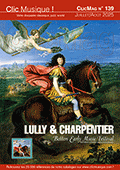 Among the various baroque instruments that the rediscovery of the ancient music has brought back to the concert halls and the recording studios, the bass violin is one of the most difficult to hear and see. Very often, even in the context of the XVIIth century music performances, that intend to follow the most rigorous philological criteria, the baroque cello is used although it did not appear before the end of that century. Actually the bass violin should replace the cello to be used as basso continuo in the whole music of the seventeenth century (but also farther, especially with regard to the non-Italian music, since the cello initially gained ground almost only in Italy), as well as for the performance of its bare solo repertoire and of the music written for the bass instrument. The purpose of this CD is just the philological performance of the music written specifically for the bass violin, alone or accompanied by the basso continuo, using the correct instruments and the performance practice of that time. The first compositions come both from the Emilian area and they are the result of the work of the Bolognese Giovanni Battista Vitali (1632-1692) and of the Modenese Giuseppe Colombi (1635-1694) as well as the patronage of the Duke of Modena and Reggio Francesco II dEste. The two composers have been active in the chapel of the Duke for long time. He was an excellent bass violin amateur, and he wrote compositions which are currently preserved in the Estense Library. Giovanni Battista Vitali wrote a book, which remained manuscript, of Partite sopra diverse sonate per il Violone, consisting of several pieces on basso ostinato and forerun by a toccata. The presence of the alphabet letters next to the titles of each pieces refers to the tablature of the Spanish guitar and therefore suggests its use to accompany the variations of the bass violin. There are three units within the book, the first consisting of the Toccata, the Ruggiero, the Bergamasca and the Chiacona, all written for the letter B, that is in the C major key. A core follows made by the sweet Capritio sopra 8 figure, the Capritio sopra li 5 tempi and by the impressive Passagalli per la lettera E, and finally the last, consisting of a bizarre capriccio, followed by two long Passamezzi, which were both partitioned further. The majority of the pieces by Giuseppe Colombi comes from his manuscript Balli a basso solo, which is preserved in the Estense Library in Modena. The Giga, the magnificent Ciaccona and the Tromba à basso solo of the same Colombi, which closes this CD, are an exception and they are all reported in various manuscripts containing mainly music for violin. Among the many dances included in the book, we can also find someone very common (brandi, correnti, gavotte, borea and so on) while others have an unusual title, which echoes the name of cities (Bergamo, La Modena, La Parma), noble titles (The Duchess, The Countess, The Mada-ma), peoples (Dance for the Armenians, Dance for the French, Dance for the German, Dance for the Spanish), and also special dances (Condilino Dance, The Glove Dance). The Two Sonatas per il violone con il basso continuo per lorgano o il cembalo deserve a separate analysis. They are attributed to Giovanni Lorenzo Lulier (1662-1700), and the sources, both anonymous, are located under the form of manuscript at the Bodeleian Library where there are some compositions by Gio-vannino dal Violone, as Lulier was often nick-named. This composer was assigned the two Sonatas by the publisher Yorke Edition, which in 1970 published a transcription for double bass, edited by Rodney Slatford. The Sonata in A minor reveals an older structure, divided into five movements, mainly dance rhythmed, while the Sonata in F major consists of only three movements : an initial allegro, a beautiful adagio and a final aria.
 |
